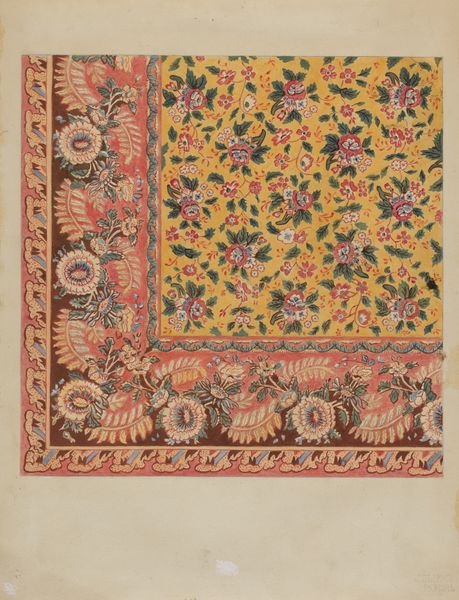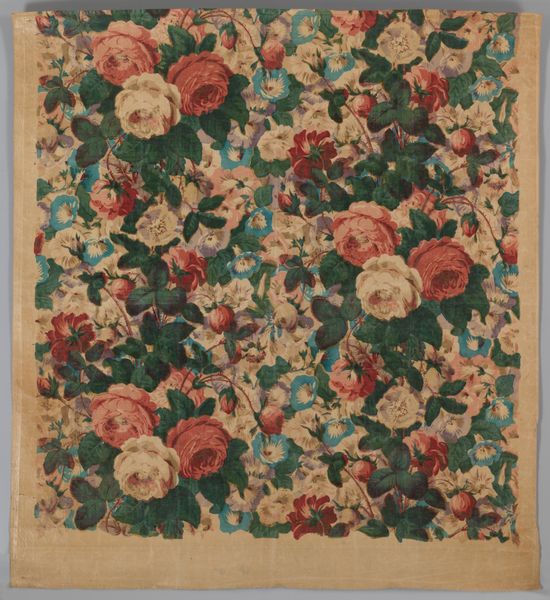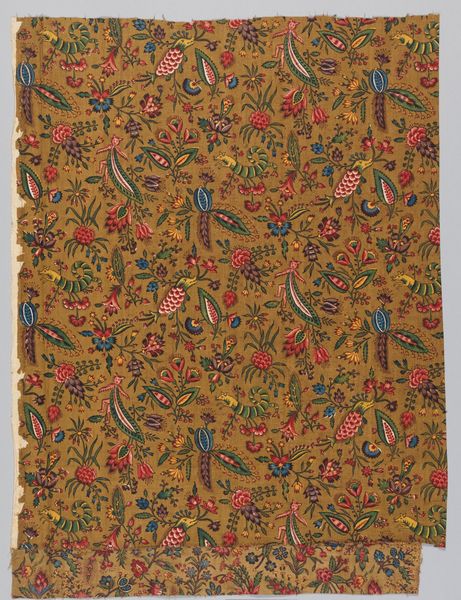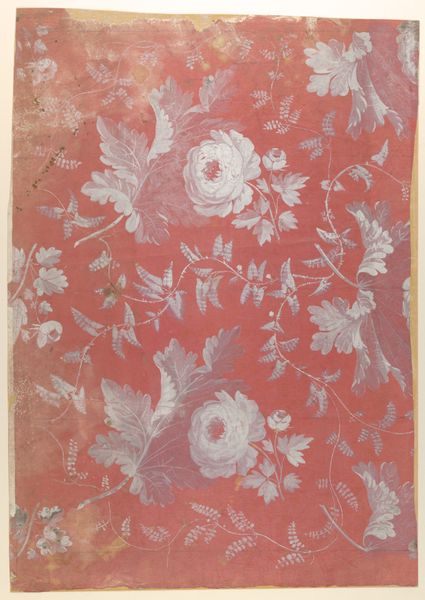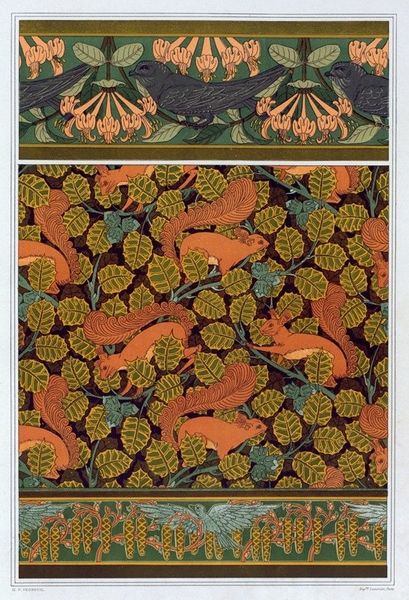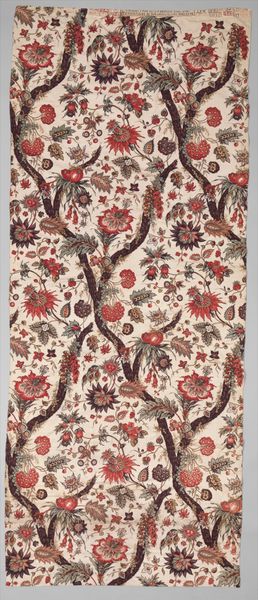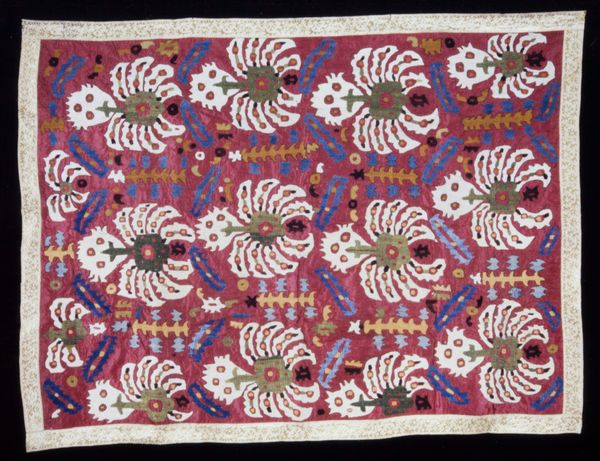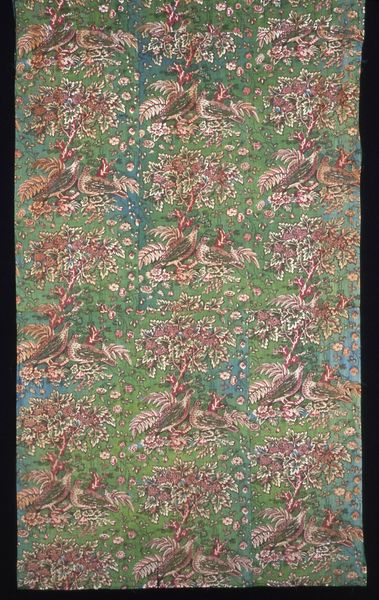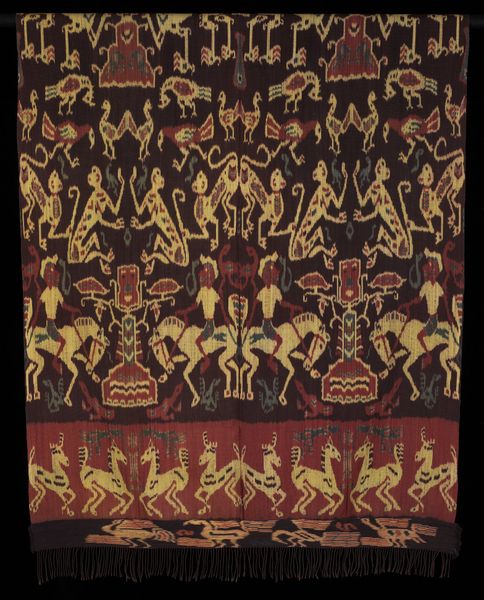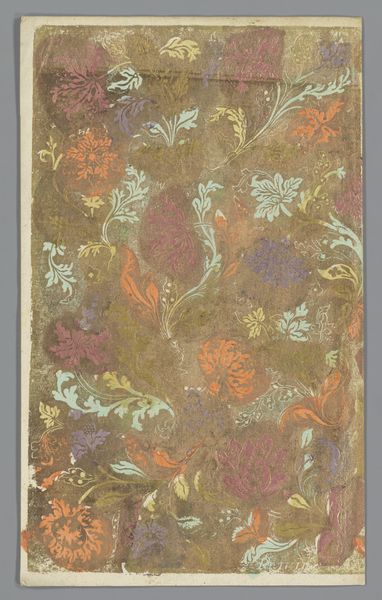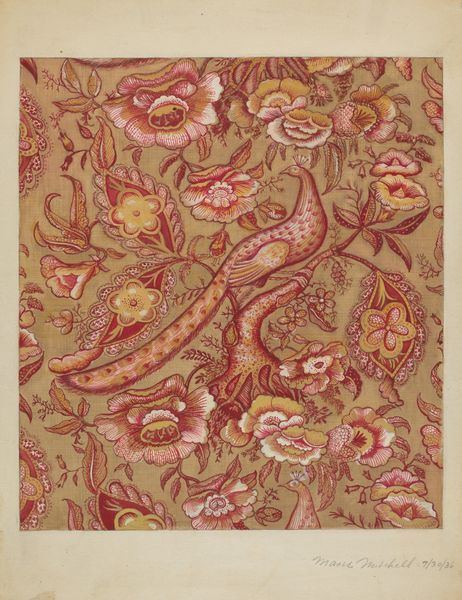
silk, weaving, textile
#
silk
#
weaving
#
textile
#
geometric pattern
#
organic pattern
#
decorative-art
Dimensions: 35 x 20 5/8 in. (88.9 x 52.39 cm)
Copyright: Public Domain
Curator: Look at this wonderful textile piece! This silk panel, made anonymously around 1700 to 1705, showcases weaving techniques common during the Baroque era. Editor: It's...busy, isn't it? The intense orange overwhelms me a bit. But there's also a hypnotic rhythm to the repeating patterns. Curator: Exactly! The bold use of color was designed to project power. Imagine this as part of a grand interior, reflecting the wealth and status of its owner. These textiles were rarely viewed as "art" but as essential expressions of social standing. Editor: I see how the colour plays into social status but, to my eye, the design itself is quite interesting. There are stylized floral elements interwoven with what look like geometric birds but everything has such subtle variation to maintain one's interest. It's organic, not mechanical, despite the strict grid. Curator: And likely intentionally so. There's a constant push and pull in Baroque art between grandeur and naturalism. These textiles were commissioned for a very specific elite audience and it is interesting how Eastern patterns are used and made Western in some sense. This combination was very common at the time. Editor: Absolutely. But even abstracted as they are, they create movement and a tactile, layered feel. And even though there is this movement to the piece the repeating of shapes can have the reverse effect of stopping the viewers' eyes almost as to focus you like an image therapy piece. Curator: Considering how this panel shaped domestic spaces and shaped people's views, there are interesting comparisons with digital interfaces, how designed surfaces govern our social interactions today. Editor: Indeed, an unexpected bridge between silk threads and digital screens. Food for thought! Curator: Indeed. This seemingly decorative textile shows its integral connections to power, perception, and presentation.
Comments
minneapolisinstituteofart about 2 years ago
⋮
In an effort to prevent French producers from taking over the luxury textile market, Italian weavers, who had dominated the trade in Europe for several centuries, created a bold new style which later historians dubbed Bizarre due to their strange and exotic patterns. During the 1690s, several European weaving centers quickly began producing these popular new patterns, but by 1700 French designers and weavers reached a degree of sophistication which has enabled them to dominate the luxury cloth trade for more than two hundred years.
Join the conversation
Join millions of artists and users on Artera today and experience the ultimate creative platform.
